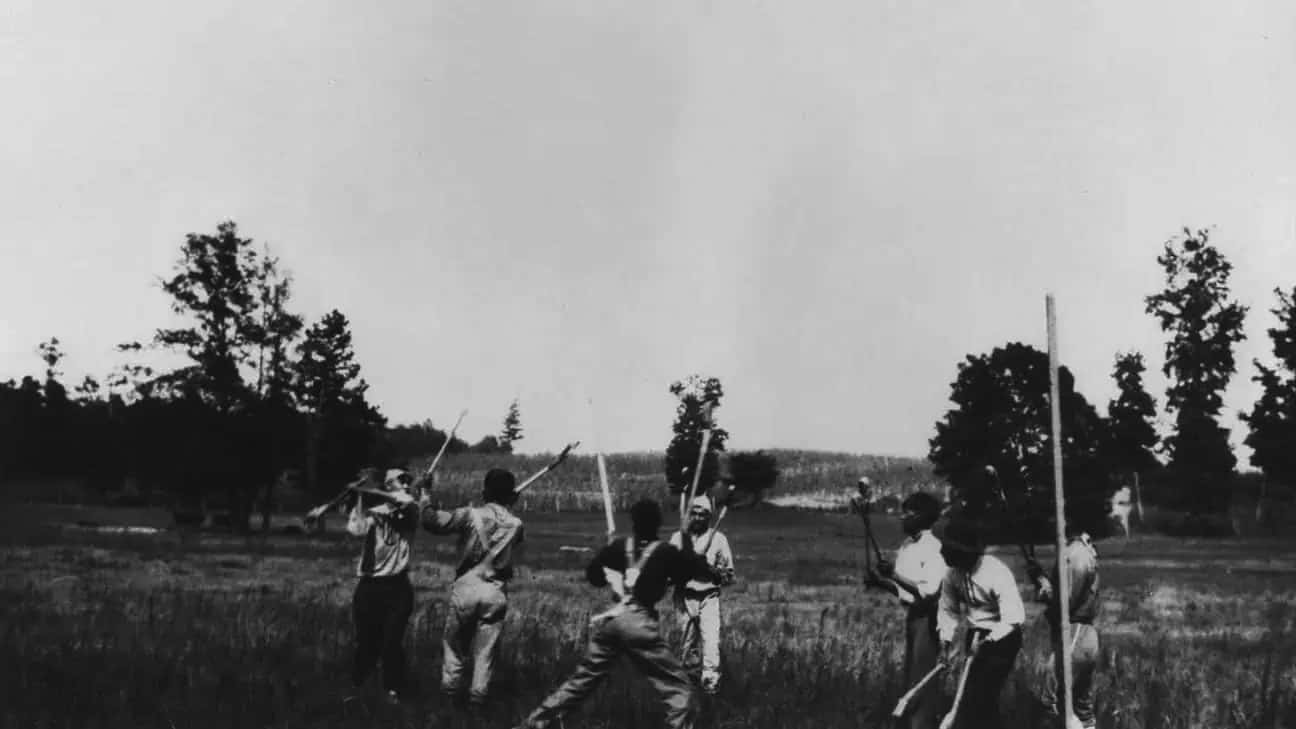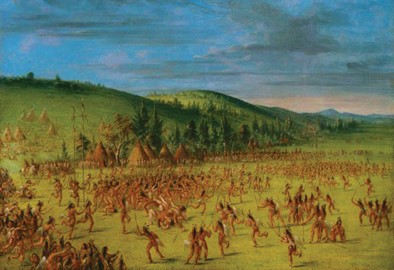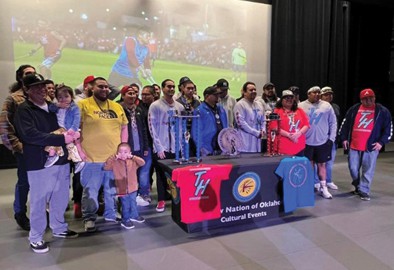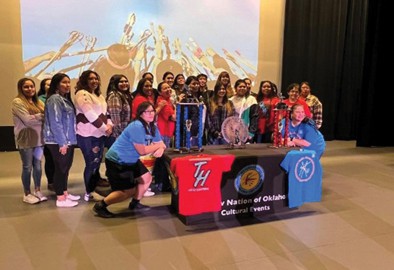 Photo by Hermes H. Knoblock. Image courtesy of the Smithsonian National Anthropological Archives.
Photo by Hermes H. Knoblock. Image courtesy of the Smithsonian National Anthropological Archives.Choctaw men playing stickball near Philadelphia, Mississippi, in July 1925.
Choctaw stickball, the game of our ancestors
By Shelia Kirven
July 5, 2023
Choctaws have played stickball for centuries. One of the oldest organized sports, it is an integral part of our culture and is commonly known as “little brother of war.”
The game was rough, aggressive and highly competitive in the old days.
It was played to settle disputes and keep warriors strong and fit, ready for possible warfare.
The historic game could be dangerous and last for days.
A goal post was set at each side of the field, and scores were made when balls hit the posts.
No protective clothing or shoes were worn, and the only tools players had were a set of sticks made from hard wood with leather lacing to hold a ball made from woven leather strips.
Players fasted, danced, meditated and used traditional medicine to prepare.
For guidance, drummers and spiritual leaders were required at games, and spectators danced, sang, feasted and gambled.
There are visual examples of historic Choctaw stickball games in paintings by Philadelphia lawyer and artist George Catlin, who specialized in portraits of Native Americans in the Old West during the 1800s.
Catlin described the game he witnessed Choctaws playing as “a school for the painter or sculptor equal to any of those which ever inspired the hand of the artist in the Olympian games or the Roman forum.”
The game of stickball in Indian Territory continued until the early 1900s, at which time U.S. Marshalls and Choctaw Lighthorsemen needed to intervene during an incredibly intense game.
After that time, it was noted that stickball wasn’t played as much in public as it had been previously.

Photo courtesy of Smithsonian American Art Museum<br>George Catlin, Ball-play of the Choctaw-Ball Up, oil on canvas, 1846-1850.

Photo by Traci Umsted<br>Tvshkahomma Men’s and 35+ teams at the 2023 Stickball Banquet.
By the 1970s, the game began to see a revival.
With more rules and a less aggressive nature, many have shown an interest in being a part of the teams, and the numbers continue to rise.
In 2009, the Choctaw Nation of Oklahoma formed its first official team and began traveling to the World Series of Stickball in Mississippi.
A women’s team, Tvshka Homma Ohoyo, was formed in 2017.
Today, stickball is played by anyone interested in learning about the sport.
Workshops are also held on how to make stickball sticks and balls.
Choctaw Nation teams participate in exhibition games and compete at local and regional tournaments, including the Choctaw Nation Labor Day Festival and World Series of Stickball in Mississippi.
Jared Tom is a cultural educator for the Choctaw Nation Cultural Center and works with the stickball teams.
Tom is excited about the upcoming World Series of Stickball in Mississippi in July, where the men’s team, men’s 35 and over, and women’s team will compete, and the Choctaw Labor Day Festival at Tvshka Homma.
There have also been state games for the kids, which took place in June. “We are talking about taking a youth team in the future,” said Tom.
Jared hosts the stickball tournaments during the Labor Day Festival.
According to Tom, the tournament was a double elimination bracket in the past, but it will be single elimination this year.
The tournament begins on Friday, September 1, and ends on Sunday, September 3, with two championship games.
There will be six men and women teams from Oklahoma and Mississippi.
Learn more information on the Choctaw Nation stickball teams or how to participate.
Check out frequently used Choctaw words and terms used in stickball.


